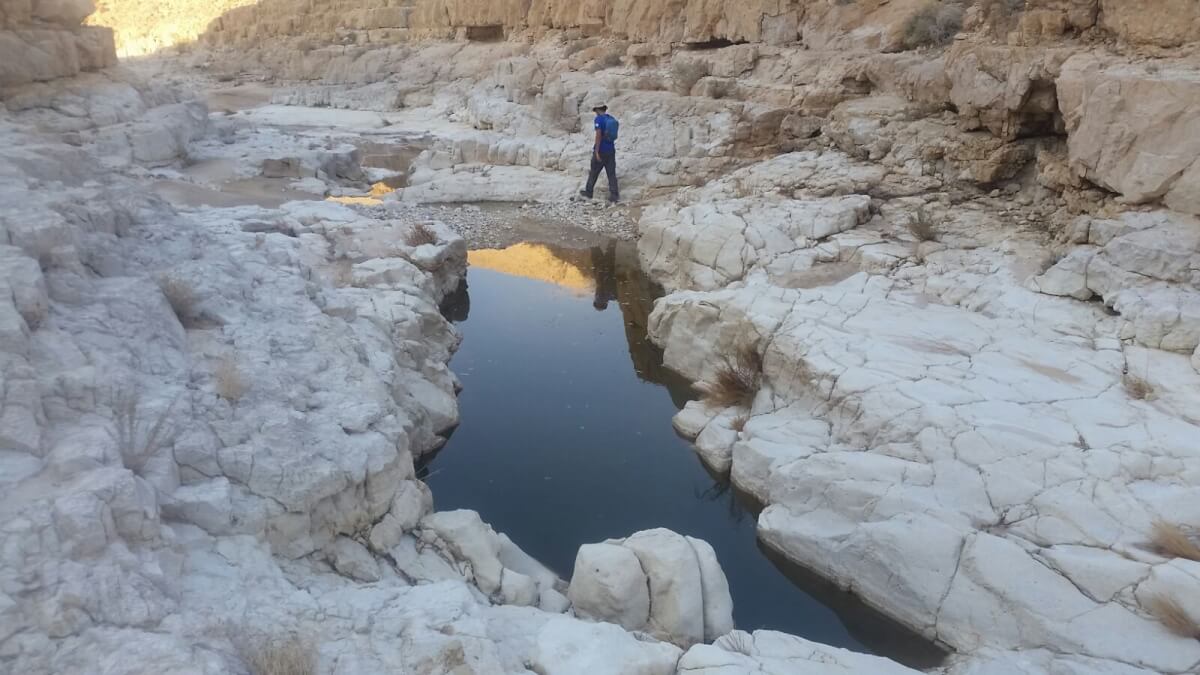Why Did the Judean Hills Fire Grow So Large?
March 20, 2022The fire that broke out in the Judean Hills last summer raged in areas where extensive efforts had been made to prevent fires. So what went wrong, and how can the next big fire be prevented?
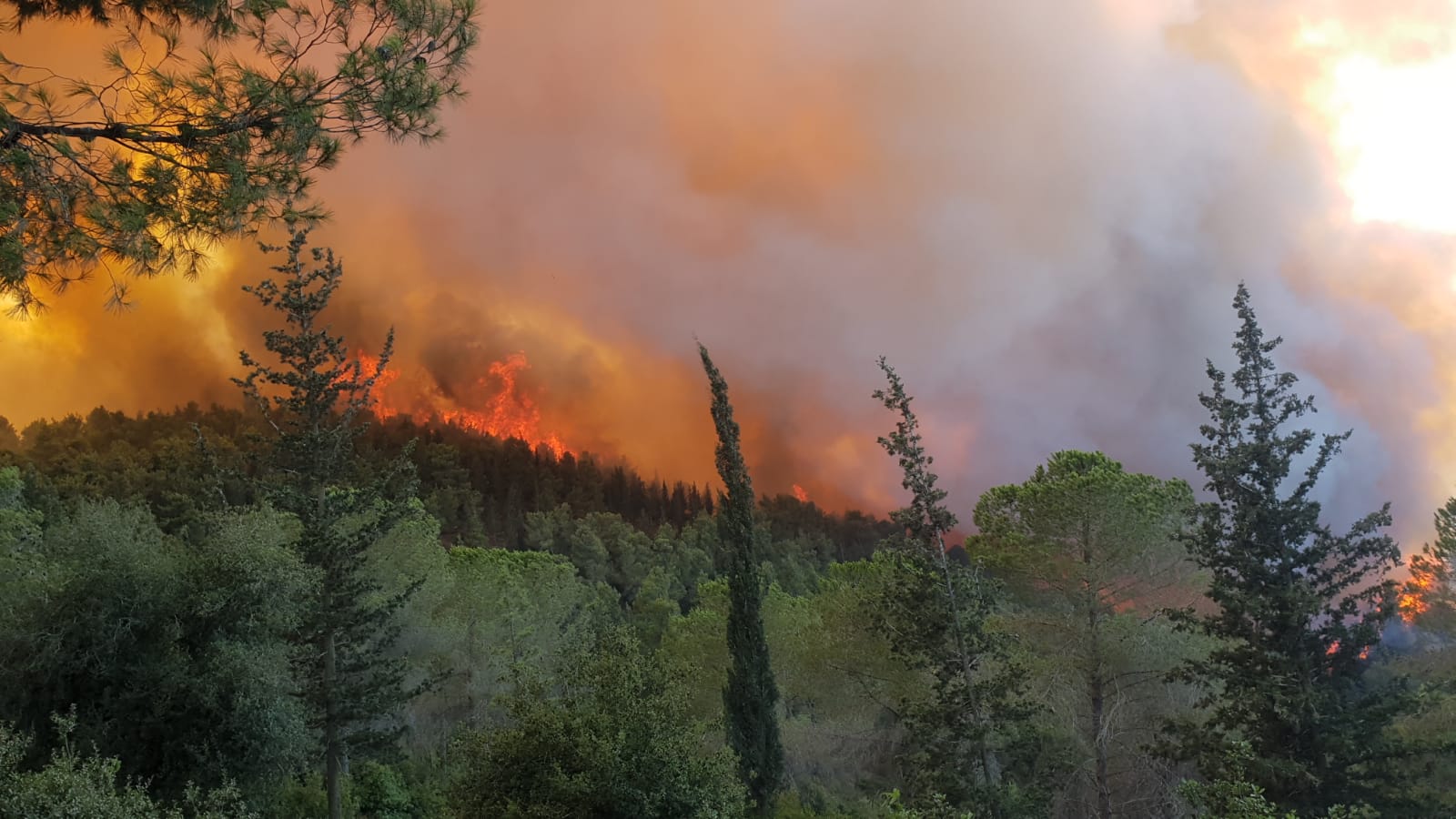
Even more than six months after last August’s raging fire that spread throughout the Judean Mountains, the damage remains quite evident in the landscape. The fire consumed about 11,000 dunams (2,718 acres) of forest, killed thousands of animals, caused extensive property damage, and took 1,500 firefighters 52 hours to put out the blaze.
The majority of the fire spread across two forests: the Forest of the Martyrs and Sataf Forest; two forests located along the Western fringes of Jerusalem that the JNF-KKL had designated as “flagship forests”. This means that these forests in particular were the focal point of the organization’s fire prevention management efforts––forestry practices like buffer zones adopted in the aftermath of the Mt. Carmel forest fire disaster.
If fire prevention measures were applied to the two most heavily charred forests, what went wrong? In a new research article published in the journal, “Ecology and Environment”, experts from the JNF’s Forestry Division and the Volcani Institute analyzed the extent of the fire and the firefighting efforts to understand what worked and what failed in order to improve forest fire prevention practices for the future.
Use the Buffer Zones
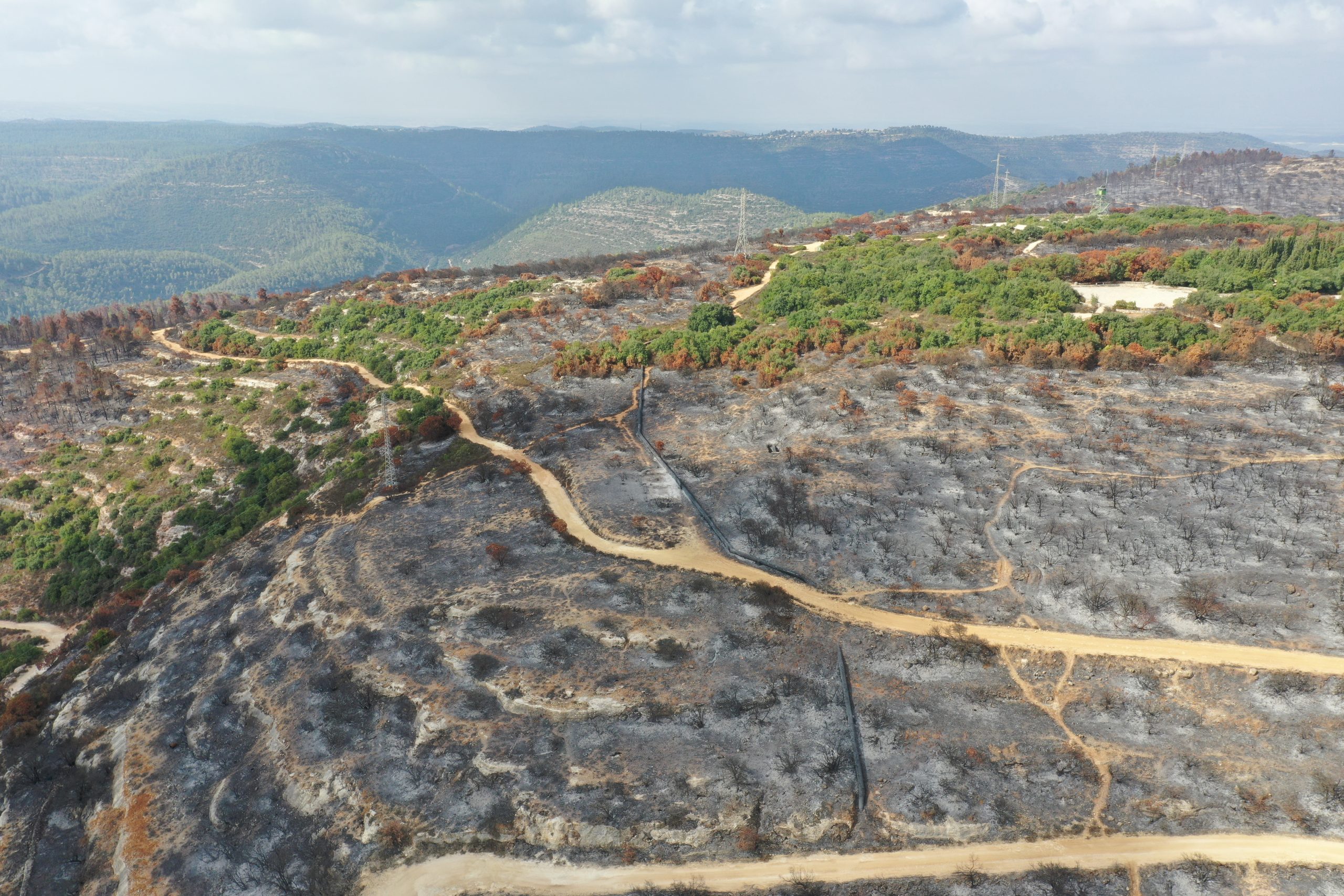
In 2013 and 2014, the JNF’s Forestry Division published long-term multi-interface management plans aligned with the principles of forest management theory for the two forests. Part of these plans involved the preparations necessary for reducing the risk of fires due to the forests’ highly susceptible topographies––steep slopes, deep river channels, and dense plots of coniferous trees; three landscape features that increase the chances of high intensity forest fires.
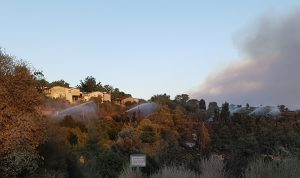
“The first major action taken was the construction of buffer zones around the settlements,” explains Dr. Yagil Osem, researcher in the Volcani Institute’s Department of Natural Resources and one of the authors of the article. “The intention was to thin the vegetation in the outline of strips around a settlement with an emphasis on thinning flammable and tall trees. Doing so can decrease the fire to such an intensity that the fire brigade can more easily stop and extinguish it by the time it reaches a settlement.”
According to Osem, the fire in the Judean mountains showed that a buffer line could sometimes stop the fire by itself without firefighters before tearing through a settlement. This was the case when the fire approached Eitanim, a settlement area that remained completely untouched while the forest surrounding it completely burned.
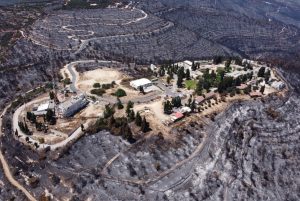
The journal article therefore emphasizes buffer zones around settlements to be one of the most effective protective tools against raging forest fires. In addition to Eitanim, localities such as Tzuba, Shoeva, and Beit Meir that had buffer zone infrastructure also remained unharmed by the fire. By contrast, localities without a buffer zone such as Ramat Raziel and Givat Ya’arim, did experience severe burning damage.
So, why weren’t buffer lines established around these settlements as well?
Osem explains, “In all the areas that were under the management of the JNF and the Nature and Parks Authority, buffer lines were set up around the localities, but in the areas of the regional councils, however, the operation was not carried out properly.”
Considering the areas that were severely damaged and the areas that were left unaffected, the August fire and the current state of the Judean Hills have finally begun turning the heads of Israel’s policymakers who have until now not arranged a budget appropriate to the scale of the issue.
“A government decision was issued this past February that includes the allocation of a budget for the establishment of proper buffer zones around localities,” Osem adds.
Lack of Coordination With Firefighters
In addition to the effective buffer lines established around the settlements, fire preventative measures were also made within the forests themselves. One such preparation was the establishment of a system of buffer lines designed to delimit a burning area, prevent the passage of that fire from one area plot to another, and enable fire brigades to feasibly reach different areas to safely carry out firefighting operations.
“Firefighters can deploy on the buffer network and stop the fire, but if they don’t use the network as part of their strategy, the buffer lines are almost useless,” Osem explains. “The intensity of the fire decreases near them, but then it passes them and moves on,” Osem explains.
With the exception of a few isolated cases where firefighters did use these buffer lines effectively, they were hardly used in the case of the August fire.
Why was this the case? Osem explains, “Overall, the buffer lines were not part of the firefighters’ agenda. We haven’t yet reached a point where firefighting brigades are being trained on how to navigate them and use them to their advantage.” This gap has led the authors of the article to recommend establishing a cooperative network between relevant entities regarding how best to combat a raging fire in the region.
“In collaboration with the National Security Council, the National Emergency Authority, and other entities, Israel’s National Fire and Rescue Authority promotes the establishment of buffer zones as an important requirement for the protection of localities,” said Dr. Shai Levy, Chief of Collection and Research in the National Fire and Rescue Authority, in response to the journal article. “The location of the buffer zones is no less important than their width, so a comprehensive vision is needed to achieve maximum efficiency. The strategy of fighting fires in forests and open areas takes into account the use of low-flammable areas, such as buffer zones, roads, etc., to create stop lines as part of the operational combat plan.”
Prevent a Fire or Let the Forest Grow?
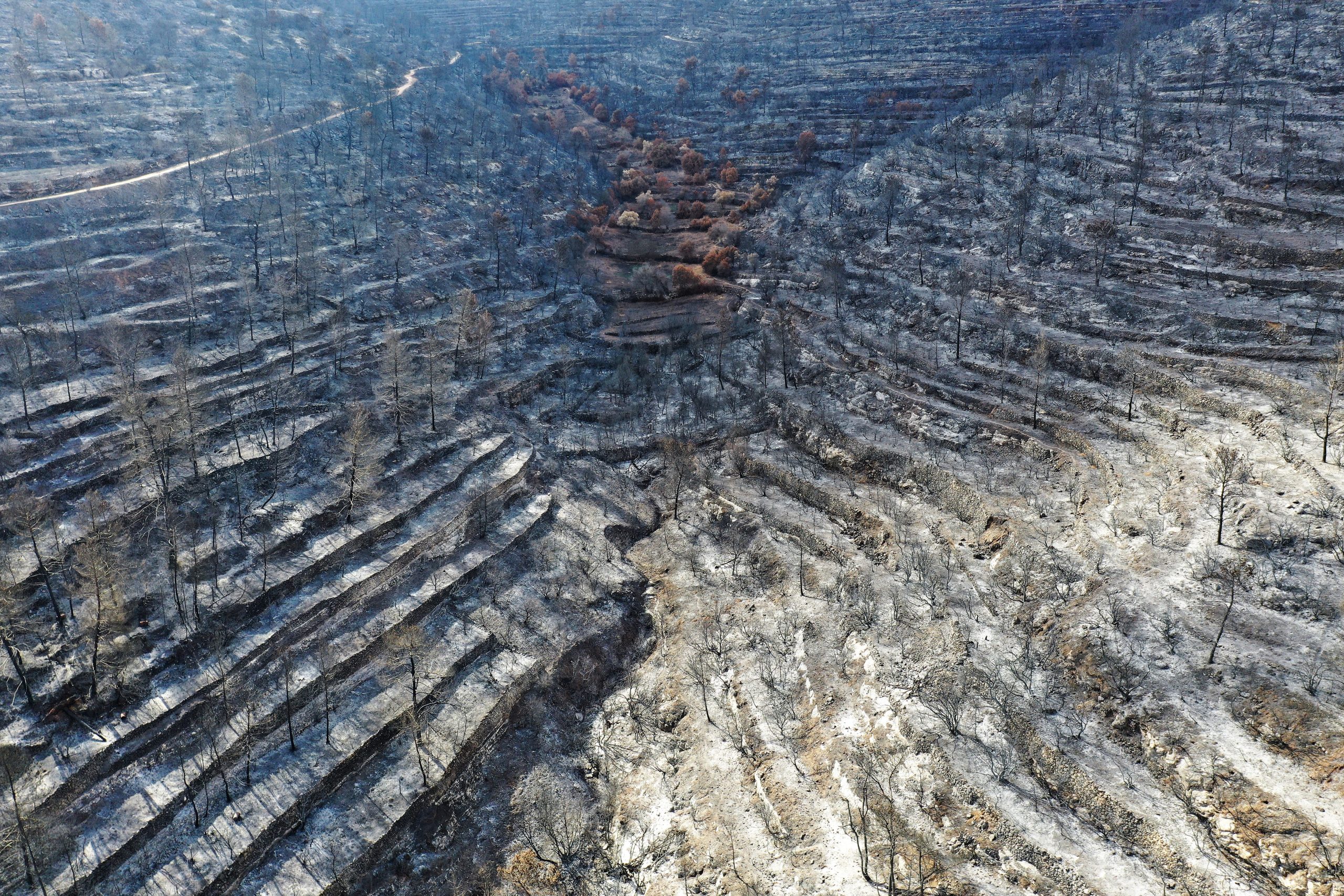
Another preparation taken on in the forest involves thinning appropriate numbers of tall and flammable pine trees and low-occupying vegetation. According to the article, about 40% of the forest (except for the buffer areas), had received thinning treatments, but it was mainly for the expressed purpose of cultivating trees and encouraging the development of mixed, healthier forests rather than reducing the risk of fire.
At the same time, goat grazing, which helps dilute forest floor vegetation, almost exclusively took place in buffer zones due to the lack of available herds. But even after these thinning measures were implemented, the researchers note that much of the forest area still contained a high density of flammable coniferous forests.
“There is a dilemma here,” says Osem. “On the one hand, we don’t want to completely dilute the forests because of the fire risks because forests provide many ecosystem services––whether in terms of landscape, carbon fixation, or recreation for the general public. On the other hand, we do not want to foster a scenario allowing mega-fires to erupt.”
The article also identifies the climate crisis to be another significant factor responsible for the increased risk of out-of-control forest fires as it is causing frequent instances of extreme dehydration of the vegetation.
A Worthwhile Investment
Since it is impossible to completely prevent the development of forest fires, the authors of the article propose a new approach involving the thinning of pine tree cover in the topographic areas that are most prone to accelerating a forest fire. This can preserve forests while simultaneously preventing enormous fires from developing like the one that erupted last summer.
“We need to build a mosaic of areas that combine several different plant formations––dense areas, tall trees, understory vegetation, groves, orchards, and more; all in different spots so that each area may play a different role,” explains Osem. “Without this type of approach, we can expect fires to blaze across thousands of densely packed acres without stopping. But if this alternative planting strategy is implemented, firefighters would be able to contain fires to a limited area of only a few hundred acres.” Osem also notes that forest-dwelling animals would then have routes by which to escape.
“Although forest fires are natural, we have to invest money in planning and caring for the forest in order to maintain the countless roles it plays to prevent mega-burning, which in the end will always cost much more than the amount invested in its prevention,” Osem concludes.
This ZAVIT Article was also published in The Jewish Journal on 16 Mar. 2022

